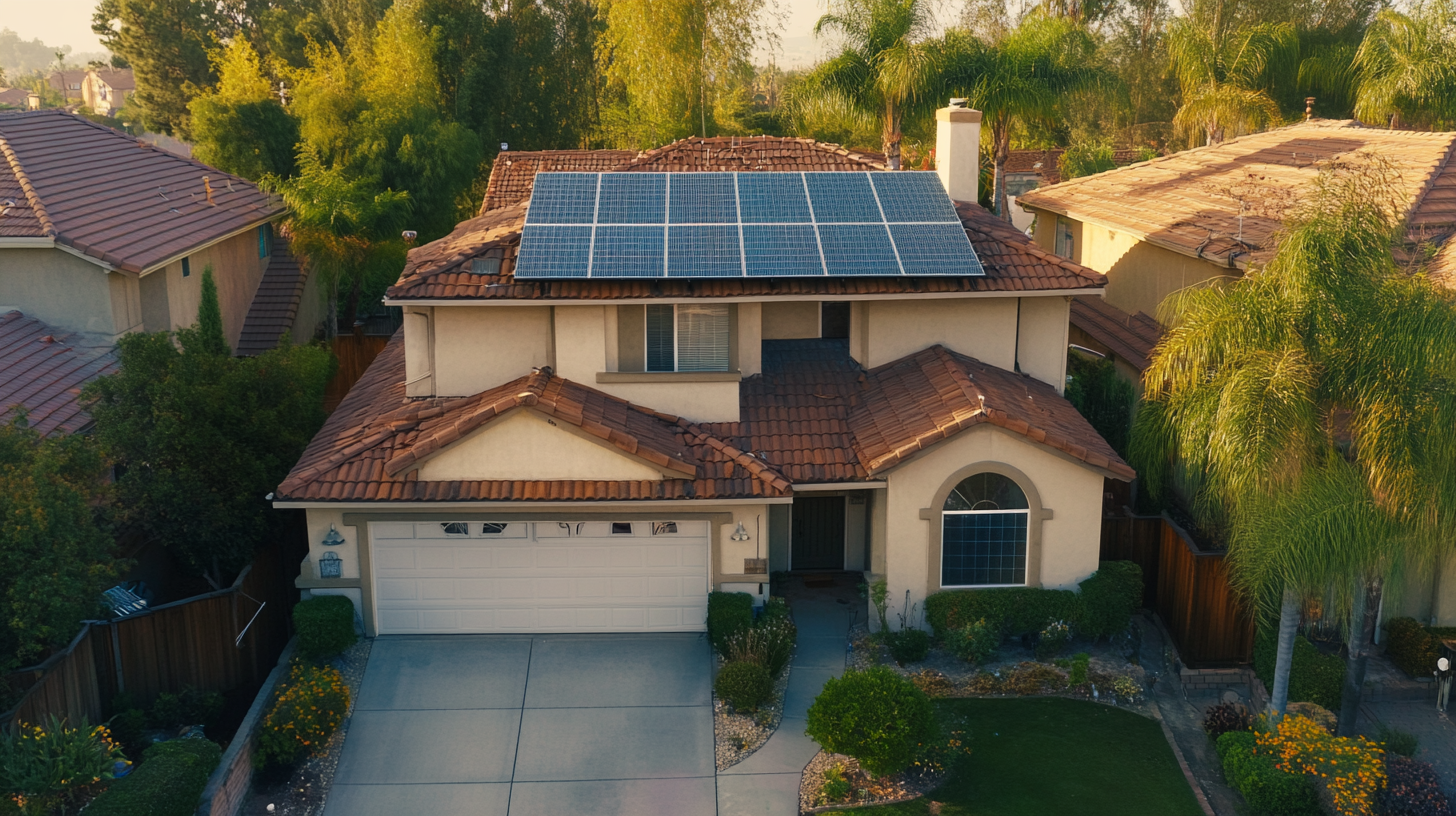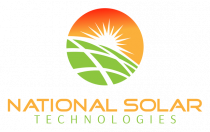Emerging Trends in Residential Solar Power Systems for 2025 and Beyond
The landscape of energy generation is undergoing a significant transformation, with Residential Solar Power Systems at the forefront of this evolution. According to a report by the International Energy Agency (IEA), the global solar photovoltaic (PV) capacity in residential areas is expected to reach over 1,000 gigawatts by 2025, highlighting the surging interest in renewable energy adoption among homeowners. As energy prices continue to fluctuate and environmental concerns grow, many residents are seeking sustainable and cost-effective solutions, leading to increased investment in solar technologies.
Furthermore, advancements in technology and decreasing costs of solar panels are driving this trend. The U.S. Department of Energy has reported that the price of residential solar installations has dropped by more than 70% since 2010, making solar power an attractive option for millions of households. With innovations such as battery storage integration, smart home connectivity, and improved energy management systems, Residential Solar Power Systems are poised to become even more efficient and accessible. As we look ahead to 2025 and beyond, understanding these emerging trends will be essential for homeowners and industry stakeholders alike, ensuring a brighter and more sustainable energy future.

Innovative Technologies Shaping the Future of Residential Solar Power
As the demand for sustainable energy solutions continues to rise, innovative technologies are playing a crucial role in shaping the future of residential solar power. One of the most exciting advancements is the development of solar panel efficiency enhancements. With new materials, such as perovskite cells, researchers are pushing the boundaries of photovoltaic efficiency, promising higher energy output from smaller surface areas. This not only makes solar installations more viable for homeowners with limited roof space but also significantly decreases the overall cost per watt of electricity generated. Another noteworthy trend is the integration of smart home technology with solar power systems. Homeowners are increasingly seeking automated solutions that optimize energy usage and storage. Smart inverters and energy management systems are being designed to communicate seamlessly with home appliances, ensuring that energy is used efficiently during peak production times. As a result, households can store surplus energy generated during the day for use in the evening, mitigating the reliance on grid power and enhancing energy independence. Moreover, innovations in battery storage technology are set to revolutionize residential solar power. The development of more efficient, longer-lasting batteries allows homeowners to harness and store solar energy more effectively. This advancement not only enables homeowners to manage their energy usage more proactively but also enhances resilience against power outages. As these technologies converge, the landscape of residential solar energy will become increasingly sophisticated, offering homeowners unprecedented control over their energy consumption and sustainability.

The Rise of Energy Storage Solutions in Home Solar Systems
As we look towards 2025 and beyond, one of the most significant trends in residential solar power systems is the increasing integration of energy storage solutions. This shift is driven by various factors, including advancements in technology, government incentives, and an overall push towards sustainable energy practices. The rise of energy storage systems, such as batteries, not only enhances the efficiency of solar power but also provides homeowners with greater control over their energy consumption.
Recent developments at major energy storage exhibitions highlight the growing interest in these systems. For instance, the ees Europe event has seen enthusiastic participation from numerous exhibitors, showcasing innovative battery technologies and energy storage solutions. Such advancements suggest a paradigm shift in how we view home energy management, allowing users to store excess solar energy for later use. This capability is particularly valuable given the potential for saving significant amounts on electricity bills, with reports indicating that homeowners can double their savings by incorporating storage alongside solar panels.
The financial considerations of installing solar systems, including both panels and batteries, are significant. While initial costs can be high, incentives and evolving market conditions are making these technologies increasingly accessible. For example, a new initiative in Hungary aims to subsidize installations for families, tapping into the growing trend of solar plus storage. As governments and utility companies develop programs to encourage this adoption, the potential for virtual battery networks emerges, enabling multiple users to share stored energy efficiently, further enhancing the viability of home solar systems.
In this rapidly changing landscape, the commitment to renewable energy is particularly evident in regions like South Africa, where government initiatives are stimulating growth in the green energy sector. Such developments are essential as we work towards a more sustainable energy future, ensuring that residential solar power systems become an integral part of our energy infrastructure.

Smart Solar: Integrating IoT and AI for Enhanced Energy Management
As we look ahead to 2025 and beyond, the integration of the Internet of Things (IoT) and Artificial Intelligence (AI) in residential solar power systems is set to redefine energy management. According to a report by MarketsandMarkets, the global market for smart solar technologies is projected to grow at a compound annual growth rate (CAGR) of 22.3% from 2020 to 2025, indicating a significant trend towards more intelligent and responsive energy solutions.
The convergence of IoT devices with solar power systems allows for enhanced monitoring and management of energy generation and consumption. Smart meters, coupled with AI algorithms, enable homeowners to analyze their energy usage patterns in real-time. This data-driven approach not only optimizes energy consumption but also maximizes solar energy utilization. For instance, a study by Navigant Research highlights that homes equipped with smart solar solutions can increase their self-consumption of solar energy by up to 40%, significantly lowering electricity costs.
Moreover, the incorporation of AI can facilitate predictive maintenance of solar panels, which is crucial for maximizing efficiency and lifespan. The predictive analytics capabilities of AI can forecast performance issues before they arise, allowing for timely interventions. According to a report from Wood Mackenzie, households employing AI for energy management can reduce operational costs by as much as 30%, highlighting the commercial viability of smart solar solutions. Overall, the merging of IoT and AI within residential solar power systems represents a pivotal shift towards smarter, more efficient, and sustainable energy management practices for the future.

Policy Changes and Government Incentives Driving Solar Adoption
The landscape of residential solar power is rapidly evolving, driven significantly by policy changes and government incentives aimed at encouraging solar adoption. As we look towards 2025 and beyond, many governments are implementing robust frameworks to support renewable energy initiatives. These measures not only make solar technology more accessible but also promote a shift towards sustainable living practices.
One prominent trend is the increase in tax credits and rebates for homeowners who invest in solar systems. In the United States, the federal solar investment tax credit (ITC) has been a game-changer, allowing homeowners to deduct a substantial percentage of their solar installation costs from their federal taxes. Many states have started to adopt additional incentives, including performance-based incentives and property tax exemptions, further enhancing the financial rationale for going solar.
Additionally, governments are recognizing the importance of simplified permitting processes and net metering policies. These changes reduce bureaucratic hurdles and allow homeowners to sell excess energy back to the grid, turning solar installations into income-generating assets. The combination of financial incentives and supportive policies is creating a fertile ground for the growth of residential solar power systems, making clean energy more appealing and feasible for the average homeowner. As these trends continue to unfold, we can expect a significant acceleration in the adoption of solar technology in residential settings.
Sustainable Materials and Designs: The Future of Solar Panel Manufacturing
As the residential solar power market evolves, a pivotal shift towards sustainable materials and innovative designs is reshaping solar panel manufacturing. According to the International Energy Agency (IEA), global solar photovoltaic (PV) capacity could surpass 1,500 GW by 2025, prompting manufacturers to rethink their production methods to meet increasing demand. Sustainability is at the forefront, with a growing emphasis on utilizing recycled and bio-based materials that lessen the environmental impact of solar panel production.
Recent advancements in solar panel design focus on enhancing both efficiency and aesthetics. A report by the National Renewable Energy Laboratory (NREL) highlights that integrating bifacial solar cells can improve energy generation by up to 30%, offering greater returns on investment for homeowners. Additionally, manufacturers are exploring the use of transparent solar panels, which can be integrated into windows and building materials, effectively transforming urban spaces into energy-generating environments.
Moreover, the push for circular economy practices in solar panel production cannot be overlooked. As per a study published by the Solar Energy Industries Association (SEIA), implementing recycling processes for old solar panels is projected to decrease waste by about 80% by 2030. This transition not only aligns with environmental regulations but also attracts eco-conscious consumers eager to invest in sustainable energy solutions, marking a promising trend for the future of residential solar systems.

